Sea Surface Temperature: 42 F
Sea State: 2-4 foot seas
Depth: 124 feet
Where are the cysts?
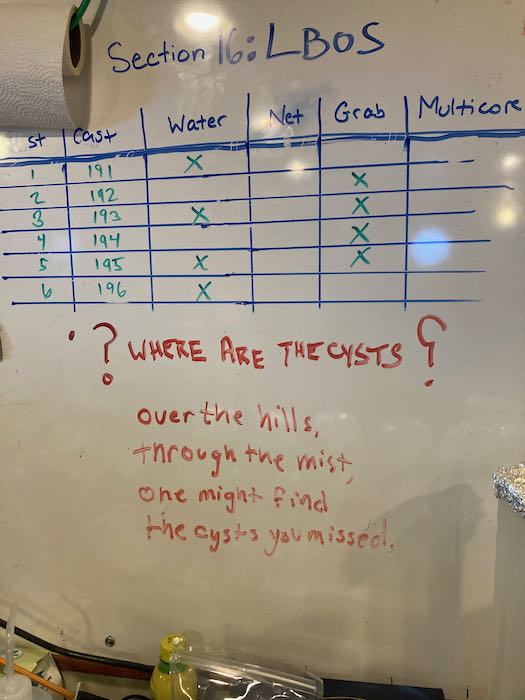
Our time sampling in Ledyard Bay last week left us with a big mystery. When Evie and other scientists visited Ledyard Bay in 2018 and 2019 they found a dense bed of Alexandrium cysts with as many as 17,000 cysts per cubic centimeter. When we arrived in the area last week, Dave counted the cysts in each of our sediment samples and there were only up to 1200 cysts per cubic centimeter. Much head scratching ensued. Where had the cysts gone? The ice in the Beaufort SeaThe Beaufort Sea lies to the north of Alaska and the Yukon and Northwest Territories. has given us a chance to try and answer this question.
Today we are hunting for cysts. We are following a zig-zag transect line through a section of Ledyard Bay that we have not sampled yet. We are also testing out two different types of sediment grabs, the Van Veen and the Smith-McIntyre. In past years, Evie sampled with a Van Veen grab, but this year we are using a Smith-McIntyre grab. It is possible that we are not finding cysts because of some difference in how the two types of grabs work. To test this hypothesis, we took five Smith-McIntyre grabs in a row, followed by five Van Veen grabs in the same spot. Back at the lab, Evie and co will count the number of cysts in each sample to check that the two grabs produce similar results.
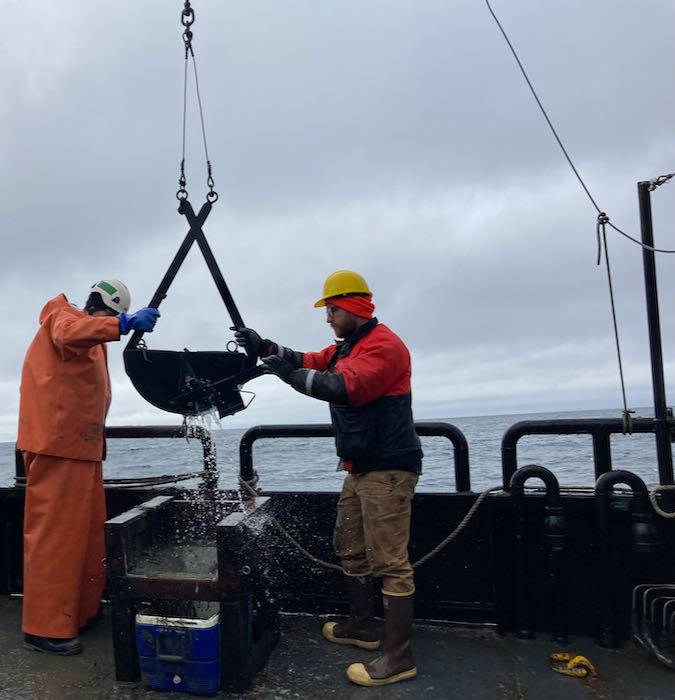
Who's Who on the Norseman II
Lefty

The Steamship Pulaski sank off the coast of North Carolina in 1838 after one of its boilers exploded. Over the years, seawater corroded much of the wreck and sand covered what remained. In 2018, a group of divers recovered many artifacts from the wreck, including gold and silver coins, pottery, silver spoons imprinted with the owner’s initials, and a pocket watch. One of these divers was Lefty, the first mate on the Norseman II.
As first mate, Lefty is responsible for the safety of the science party, crew, and vessel. Every month, he inspects the safety equipment, including firefighting equipment, the emergency lights, the life rafts, and the EPIRB. He drives the boat at night, and hosts safety meetings twice a day. His colorful past also includes shark diving in the Bahamas and working as a dive instructor. He got his start on the sea by attending a community college that focused on scuba diving. Later, he attended Maritime Professional Training Academy in Fort Lauderdale, FL to get his 100-ton master license. He first came to Alaska last summer to work as lead deck hand on board the Norseman II. In December he completed training for his 200 ton captain’s license, which qualified him to be the mate this year.
Patrick
As the oceans change, how will marine mammals fare? Will they be able to adapt to climate change? What can humans do to help them survive climate change? These are the questions that motivate Patrick. He grew up far from the ocean in Wisconsin, but has always been interested in life in the water. In college, he took a marine mammal biology class, which sparked his interest in physiology (how the body works) and how seals, walruses, and other animals respond to stresses.
After graduating, he wanted to get experience in the field. He went out and did a bunch of internships. Some of these internships then turned into jobs. For example, he interned for the Soundwatch Boater Education program in the San Juan Islands in Washington. When the internship was complete, they hired him on as the stranding coordinator. His job was to assist seals and other marine mammals who had been injured or displaced by humans.
To get still more science experience, he did a 2 year master’s degree at UAF. He measured the hormones in walrus bones to understand how their stress levels and reproduction is affected by climate change. He liked that so much that he stayed on for a third year as a research technician, before moving to Texas to spend five years completing a PhD about toxic mercury in Antarctic leopard seals.
At the end of this cruise, he will move back to Washington to research HAB toxins in walruses and bowhead whales. On this cruise, he is collecting data for this research. His main job onboard is to conduct the Smith-McIntyre grabs for mud and invertebrate sampling, and then to identify the invertebrates and pack them up for transport back to his lab.
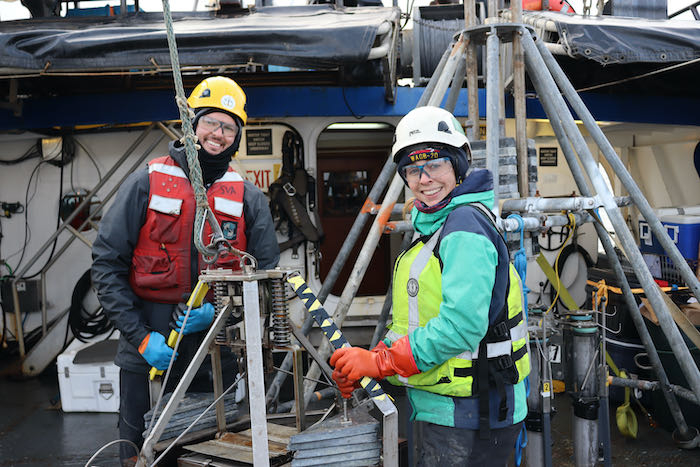
Marshall
Marshall has always been fascinated by the water and by things that are mechanical. Trained as an electrical engineer, he is a research associate at the Woods Hole Oceanographic Institute. His job is very broad, but involves providing equipment necessary for scientists going out on ships (such as water sampling, CTDs, or undersea camera systems), working with individual technicians on different science missions, and much more. His work at WHOI has led him to many unexpected experiences, such as visiting Vladivostok, Russia in the middle of winter to inspect an icebreaker, and boating through the Straits of Malacca with an escort from the Indonesian Navy to protect against pirates.
Onboard the Norseman II, Marshall keeps all the electric and computer systems running for the CTDA research tool that is submerged in the water to measure conductivity (salinity), temperature, and depth. and other sensors. He has worked with CTDs for HOW LONG. When the CTDA research tool that is submerged in the water to measure conductivity (salinity), temperature, and depth. is being deployed he watches the data being displayed on the computer screen. He tells the winch operator when to lower the CTDA research tool that is submerged in the water to measure conductivity (salinity), temperature, and depth., when it has reached 5 meters off the bottom, and when to raise it. He also carefully watches the readouts to make sure all the instruments are working. If he sees something amiss, he uses his experience to try and troubleshoot the problem.
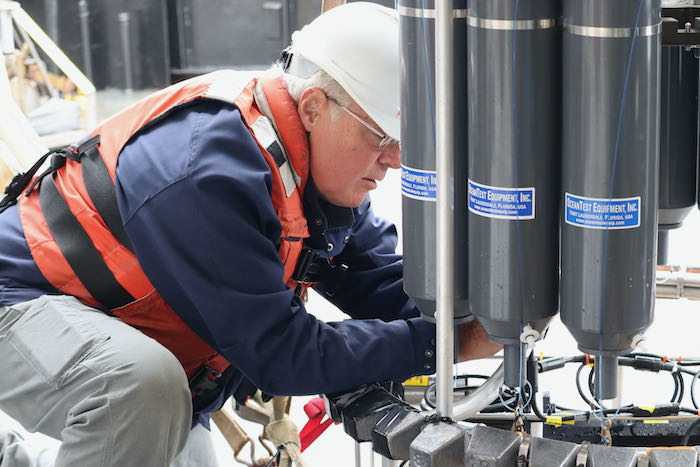
Before working at WHOI he had many different jobs which all gave him experience that helps him in his work today. His first job as a teenager was as a door-to-door salesman for cemetary plots, which he said taught him self-confidence, how to have difficult conversations, and how to handle rejection. During college, he worked for a concert hall, doing all the behind the scenes work to put on big concerts.
Marshall says that his biggest advice to young people is to learn new skills, and to remember that you never know who you can help or who can help you.
Dave
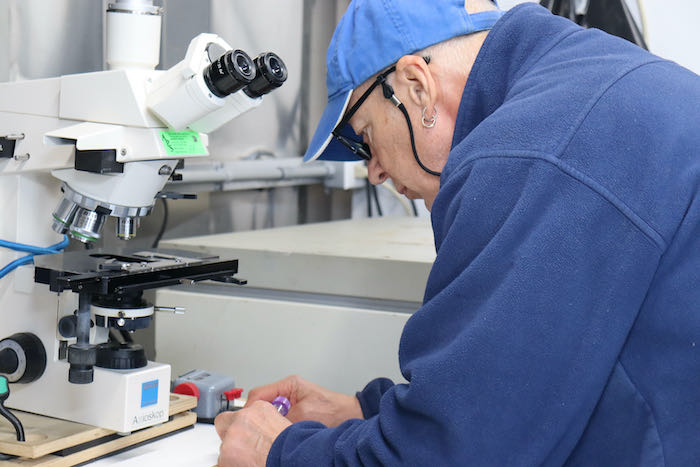
Dave Kulis is the Norseman II’s cyst counter extraordinaire. He runs the Alexandrium cyst germination experiments taking place onboard, and can often be found filtering water, counting the cysts in a sediment sample, caring for the Alexandrium in the incubator, or riding the exercise bike.
Back at Woods Hole, Dave is responsible for managing the HAB laboratory. This job involves carrying out experiments, caring for plankton cultures (plankton that is grown in a lab), analyzing samples with a microscope, analyzing HAB toxins, writing research proposals, supervising the junior staff, and fixing broken equipment.
Dave first got interested in HABs as was a junior in college when he analyzed some data about red tides in a math class. He needed an internship the following summer, and found one at Woods Hole in a lab studying HABs. He did such a good job that they hired him on as soon as he graduated.
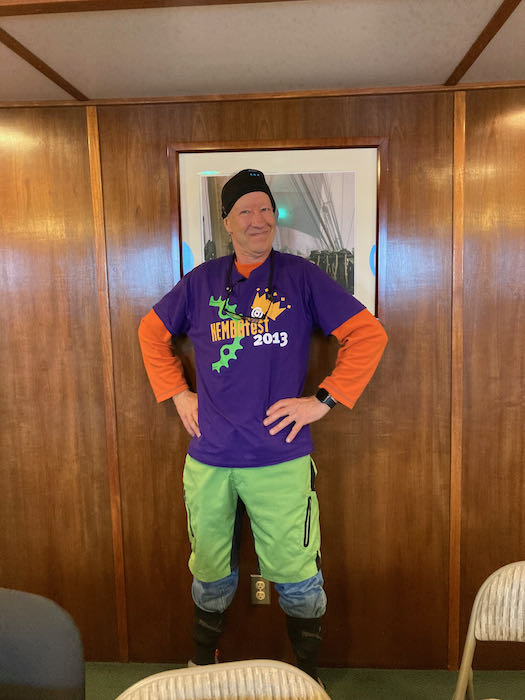
Kali
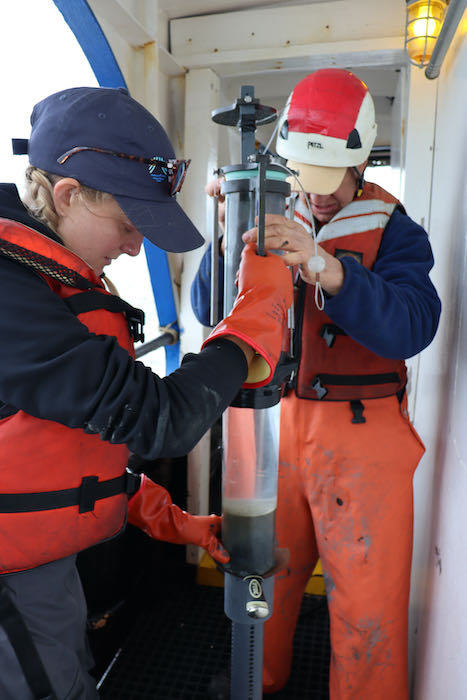
You’re in luck if you have a birthday onboard the Norseman II because Kali will plan you a surprise party. She keeps us grooving on deck with playlists full of dance music, and she is a fearsome cribbage player.
During college, Kali did an internship at Woods Hole to see if she liked working in a science lab. After graduating, she worked on Catalina Island off the coast of California teaching students about the ocean. This work was fun but she missed chasing the unknown by asking scientific questions and coming up with experiments to answer them. This led her to graduate school to study marine biology, and then back to Woods Hole to study HABs. Over the last year, she worked on many of the logistics for this cruise, including planning all the sites where we would core and packing all the supplies. On the Norseman II, she is part of the HAB team. She collects sediment samples from the grabs, prepares the invertebrates for lab analysis, and processes sediment cores.


Comments